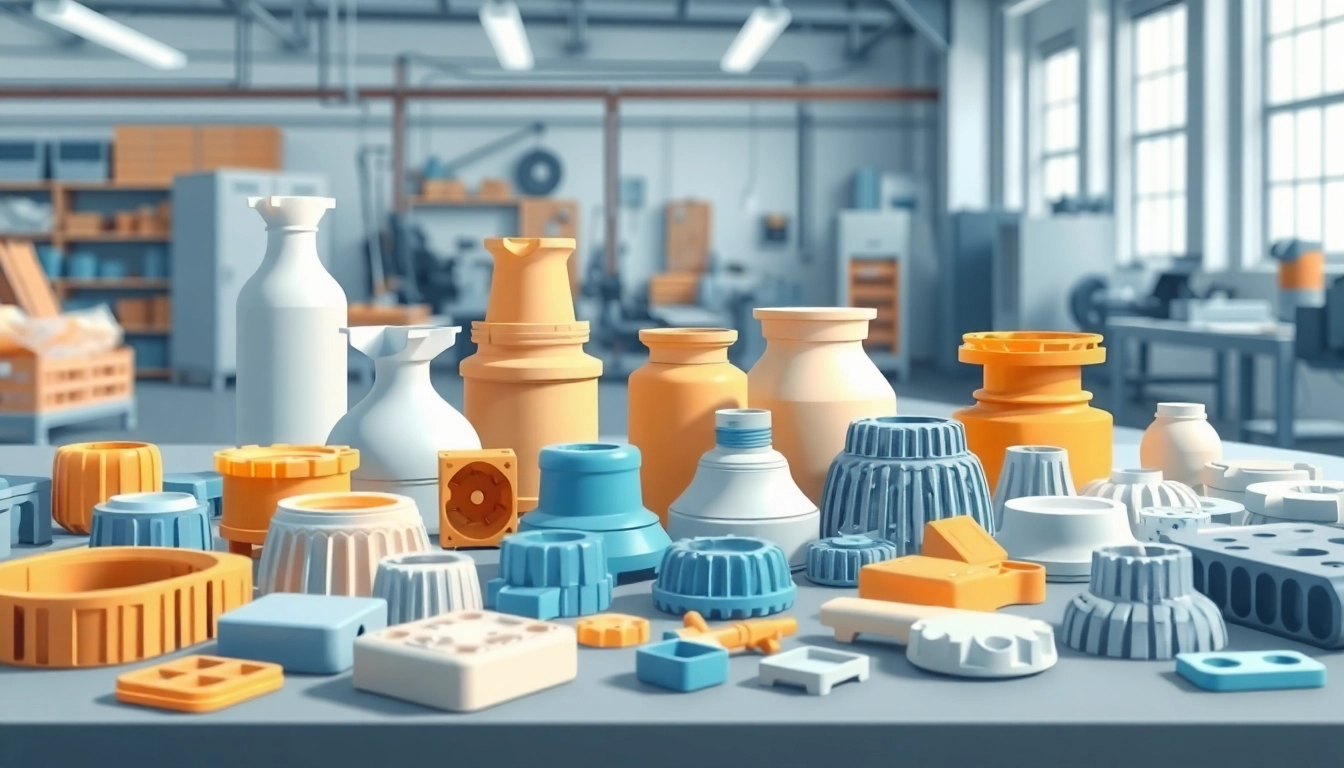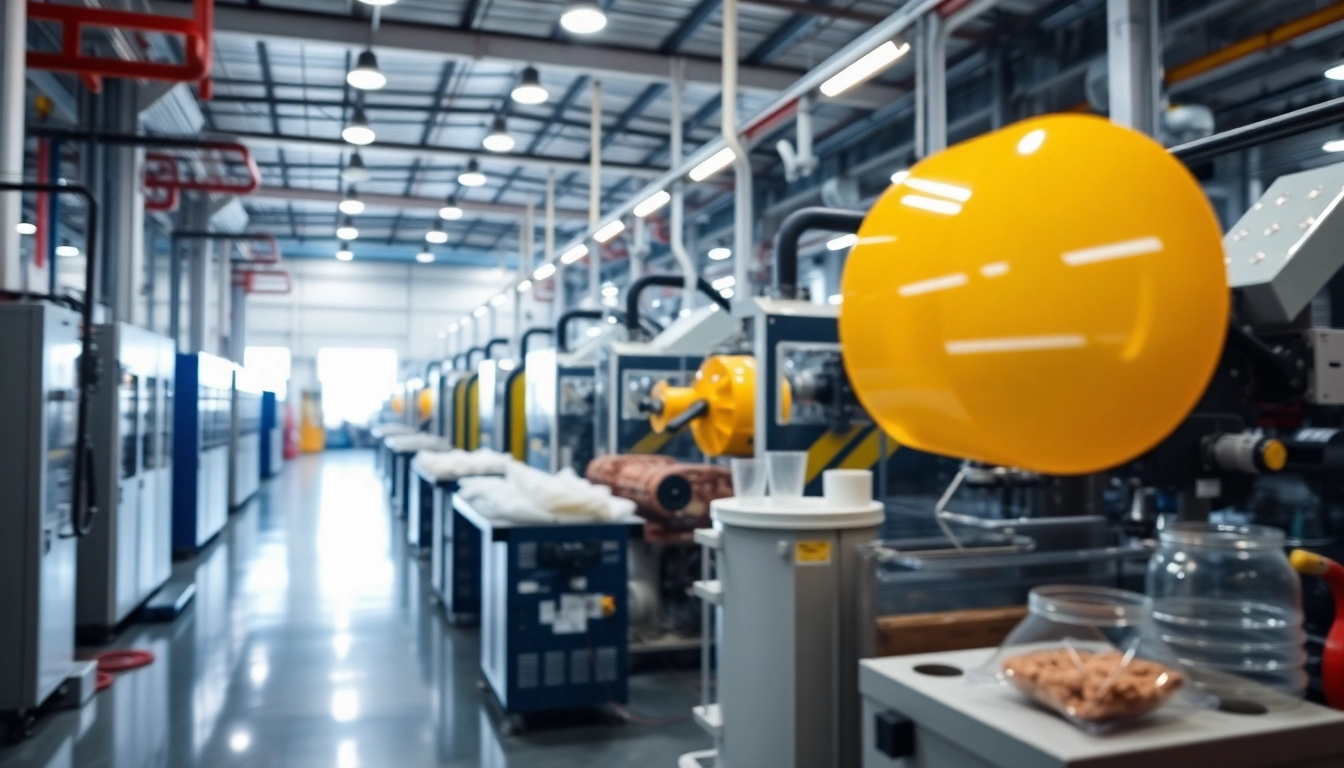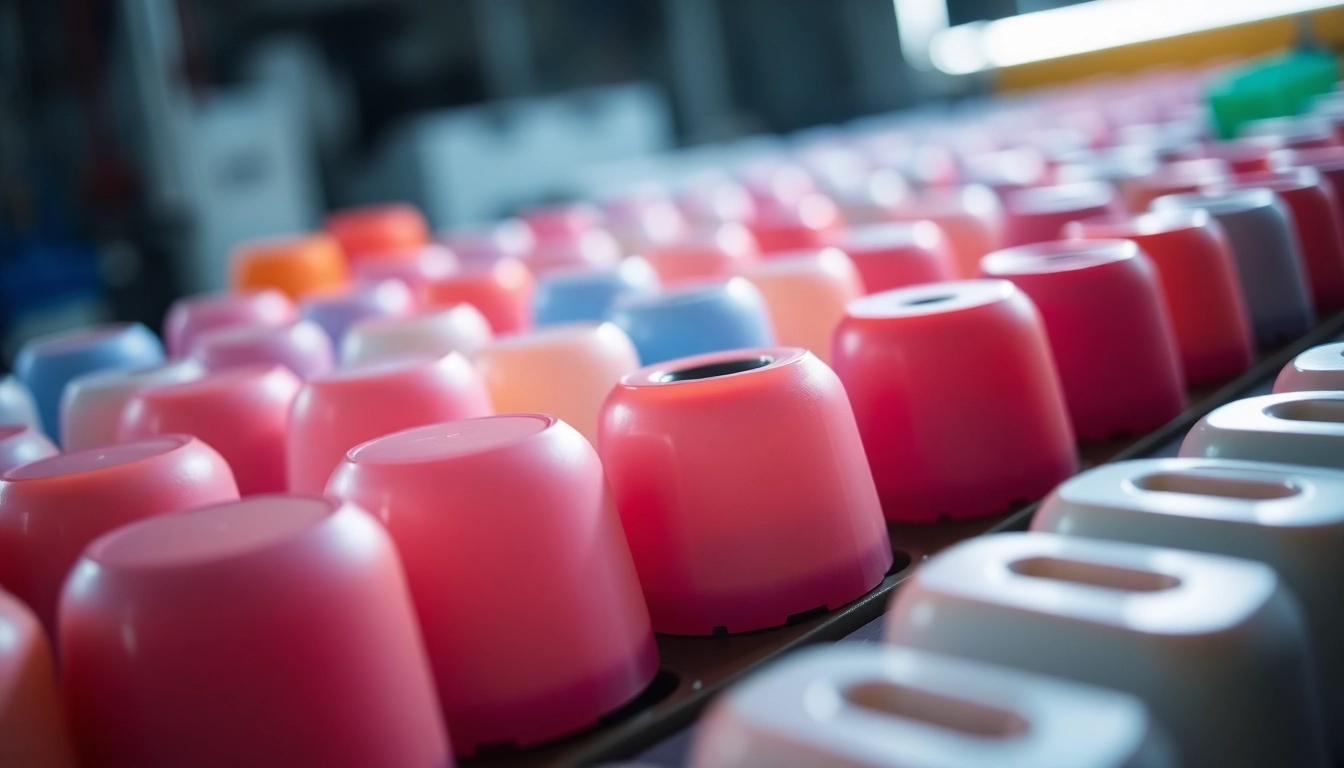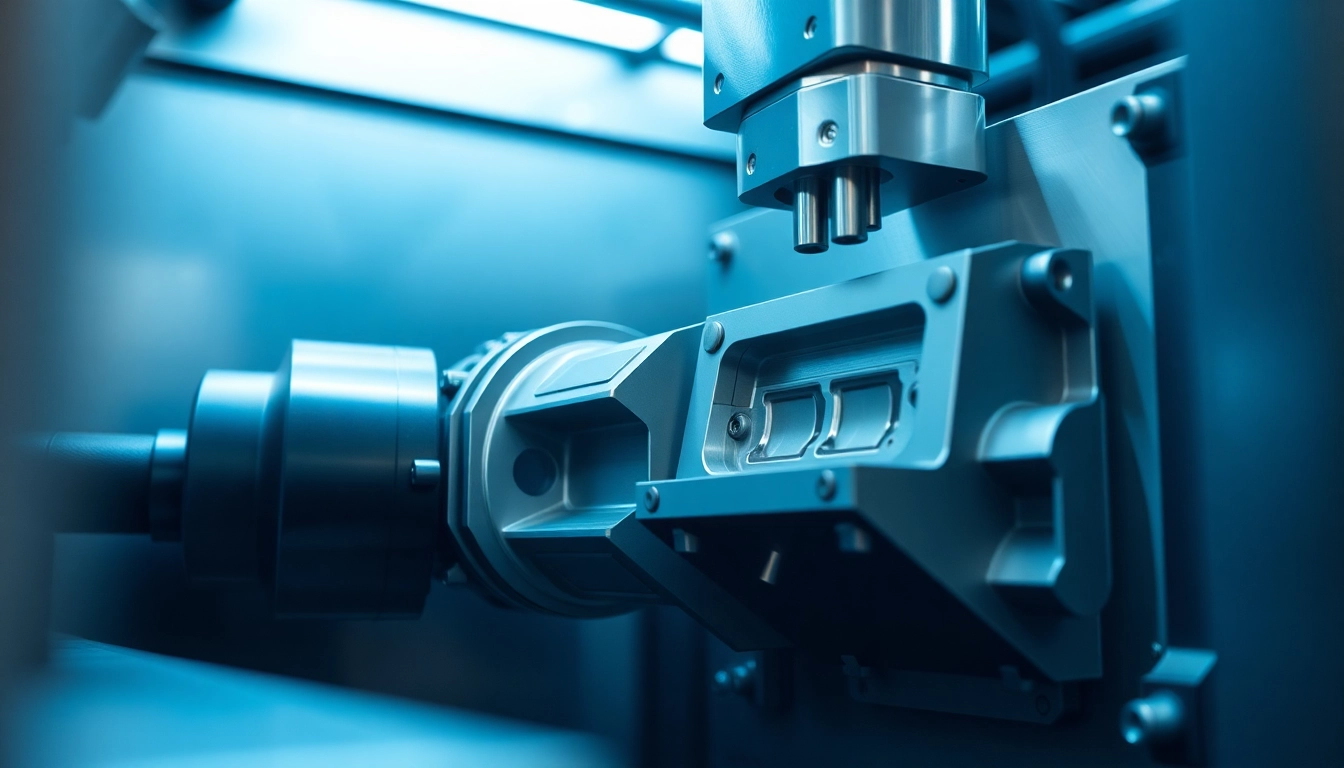Introduction to Injection Molded Parts
Injection molded parts are pivotal components in a wide array of applications, spanning numerous industries. The injection molding process enables manufacturers to produce intricate and complex shapes efficiently and cost-effectively. As technology continues to advance, the possibilities for creating injection molded parts are expanding, offering new materials and manufacturing capabilities. This article delves into the essential elements of injection molded parts, their history, their significance in various industries, the components involved in their production, and best practices for their design and production.
What are Injection Molded Parts?
Injection molded parts are produced by injecting molten material into a pre-designed mold cavity and allowing it to cool and solidify. This method is primarily used for manufacturing plastic items, though metals and ceramics can also be injected using specific processes. The result is a versatile and robust product with high precision and repeatability, making injection molding a preferred choice for mass production.
History and Evolution of Injection Molding Technology
The history of injection molding dates back to the mid-19th century. The first patent for an injection molding machine was granted to John Wesley Hyatt in 1872, primarily aimed at creating billiard balls from a newly developed plastic called celluloid. The technology saw gradual improvement over the decades, with significant developments in materials and machine technology occurring in the 20th century, particularly post-World War II when plastics became widely available. Today, advanced computer technologies and automation have revolutionized the injection molding process, achieving further enhancements in efficiency and precision.
The Importance of Injection Molded Parts in Industry
Injection molded parts are integral to manufacturing in sectors such as automotive, electronics, consumer goods, and medical devices. Their ability to create components that are lightweight yet strong, coupled with the precision of their design, allows industries to enhance product functionality while reducing costs. The efficiency of injection molding also plays a crucial role in high-volume production, promoting economies of scale that benefit businesses in competitive markets.
Components of Injection Molded Parts
Key Elements of an Injection Mold
An injection mold consists of various components that work together to form the final part. The core parts of a mold typically include:
- Base: The foundation of the mold that provides structural stability.
- Cavity: The hollow space that defines the shape of the molded part.
- Core: The part of the mold that makes the interior shape of the component.
- Plates: The plates hold the mold in place during the injection process.
- Ejector Pins: These help eject the finished part from the mold without damaging it.
- Sprue and Runner System: Channels that convey the molten material into the cavity.
Material Choices for Injection Molded Parts
The choice of material is paramount in the injection molding process. Common materials used include:
- Thermoplastics: They can be reheated and reshaped, making them ideal for injection molding. Examples include polypropylene, ABS, and nylon.
- Thermosetting Plastics: These materials undergo a chemical change during processing and cannot be remolded. Examples include epoxy and phenolic.
- Elastomers: These are rubber-like materials with flexible properties, suitable for applications requiring elasticity.
The selection of the right material depends on factors such as the intended application, required mechanical properties, and thermal stability.
Common Defects in Injection Molded Parts
While injection molding can yield high-quality parts, several defects can occur during production, including:
- Sink Marks: Indentations on the part surface due to inadequate material flow or cooling.
- Short Shots: When the mold does not fill completely, leading to incomplete parts.
- Warpage: Deformation caused by uneven cooling or internal stresses.
- Flash: Excess material that spills over at the mold’s parting line.
- Bubbles: Air entrapments within the part, often resulting from moisture in the material.
Understanding these defects is critical for troubleshooting and improving the injection molding process to enhance part quality.
The Injection Molding Process Explained
Steps Involved in Injection Molding
The injection molding process comprises several key steps:
- Material Preparation: Raw material, usually in pellet form, is dried and prepared for melting.
- Injection: The prepared pellets are heated in a barrel until melted and injected into the mold cavity under high pressure.
- Cooling: After the material is injected, it is cooled within the mold to solidify.
- Ejection: Once cooled, the mold opens and ejector pins remove the finished part.
- Post-Processing: Additional steps like trimming, painting, or assembly may be required.
Types of Injection Molding Techniques
Different techniques can be employed based on the requirements of the part being manufactured:
- Standard Injection Molding: The conventional process for mass-producing parts.
- Multi-Shot Molding: Involves injecting two or more materials in a single cycle, allowing for different material properties within one part.
- Gas-Assisted Injection Molding: A gas is injected alongside molten plastic to create hollow parts, reducing weight and material usage.
- Insert Molding: Components are placed into the mold before injection, producing parts with integrated features.
Optimizing the Injection Molding Process for Quality
To ensure high-quality injection molded parts, manufacturers must focus on process optimization. Key factors include:
- Temperature Control: Maintaining optimal temperature during melting and cooling is essential to prevent defects.
- Injection Speed: Adjusting the speed of injection to balance fill time and pressure can minimize defects like short shots.
- Mold Design: Designing molds with proper geometry and venting can facilitate better flow and reduce defects.
- Material Selection: Choosing appropriate materials based on the end-use conditions enhances performance and durability.
Applications of Injection Molded Parts
Everyday Products Made from Injection Molding
Injection molding produces a staggering range of everyday products. Some common examples include:
- Plastic bottles and containers
- Consumer electronics housings
- Toys and games, including LEGO pieces
- Automotive components such as dashboards and bumpers
- Kitchenware like storage containers and utensils
Industries Leveraging Injection Molded Parts
Numerous industries utilize injection molded parts due to their versatility and efficiency:
- Automotive: Used for dashboards, bumpers, and engine components.
- Electronics: Housings, connectors, and internal structures in devices.
- Medical: Syringes, surgical instruments, and device housings.
- Consumer Goods: Products like personal care, kitchenware, and toys.
- Aerospace: Lightweight and durable components for aircraft and spacecraft.
Future Trends in Injection Molding Applications
As industries evolve, several trends are shaping the future of injection molded parts:
- Sustainability: A growing push towards using biodegradable and recycled materials.
- Smart Manufacturing: The incorporation of IoT sensors in the molding process for real-time monitoring and automation.
- Advanced Materials: Exploring new composite materials that enhance performance.
- Customization: Increased demand for customized parts, leading to more flexible manufacturing solutions.
Best Practices for Designing Injection Molded Parts
Key Design Considerations for Injection Molded Parts
Designing effective injection molded parts requires careful consideration of various factors:
- Draft Angles: Including a draft angle on vertical surfaces facilitates easier ejection from the mold.
- Wall Thickness: Maintaining consistent wall thickness to avoid issues with cooling and structural integrity.
- Radii and Fillets: Incorporating radii can strengthen the part and reduce stress concentrations.
- Features and Textures: Designing surface textures and features carefully to avoid added costs in tooling.
Integrating Cost-Effectiveness in Design
Cost-effectiveness is essential in the design process. Strategies to achieve this include:
- Optimizing material usage by reducing excess material in the design.
- Simplifying the design to minimize complicated features that increase tooling costs.
- Leveraging standard components and molds to cut down on custom tooling expenses.
- Engaging in design for manufacturability (DFM) practices to streamline production processes.
Testing and Quality Assurance for Injection Molded Parts
Rigorous testing and quality assurance processes are crucial to ensure the reliability and performance of injection molded parts:
- Dimensional Inspection: Using calipers and gauges to verify that parts meet specified tolerances.
- Material Testing: Conducting tests (tensile, impact, thermal) to assess material properties.
- Performance Testing: Evaluating parts under simulated end-use conditions to guarantee functionality.
- Statistical Process Control (SPC): Implementing SPC to monitor and control the injection molding process quality.




